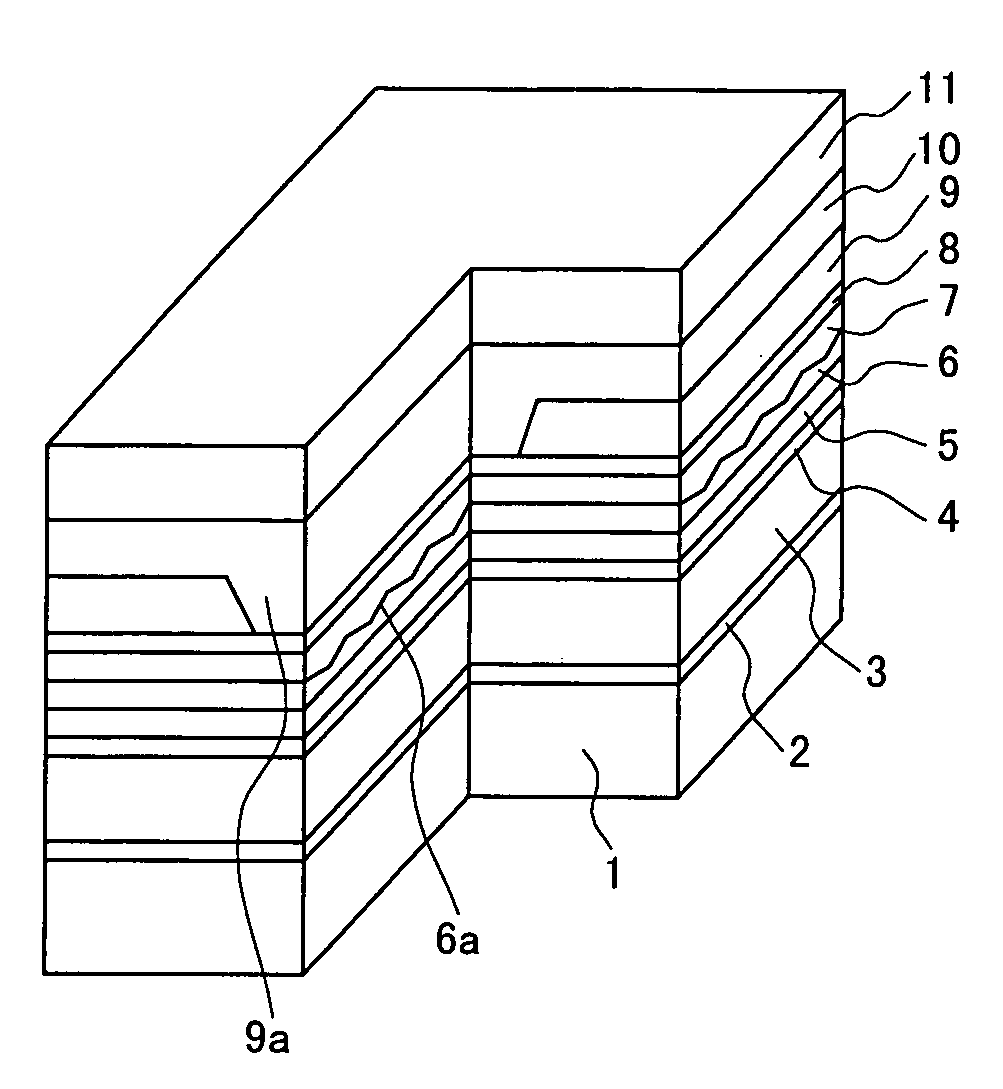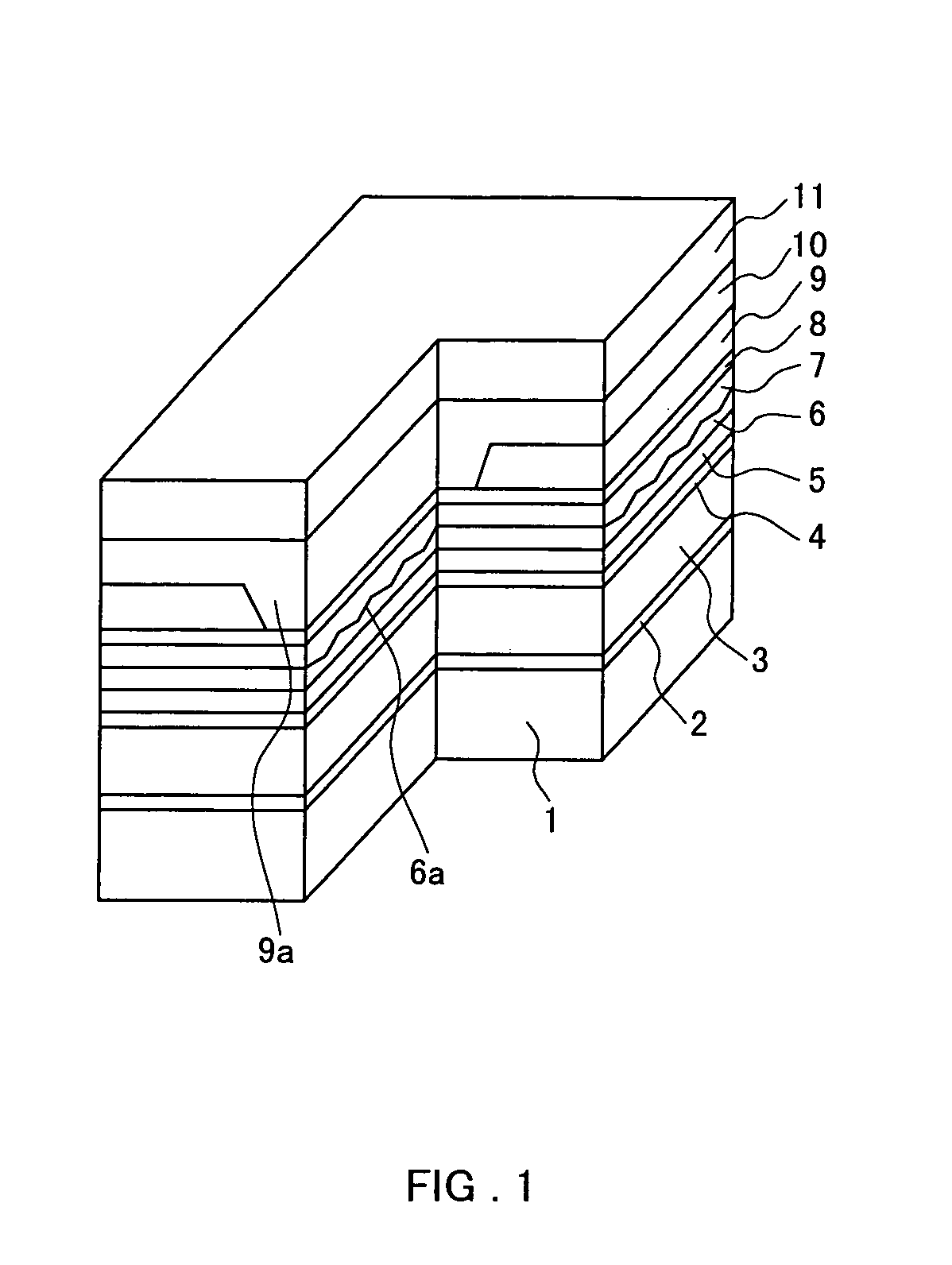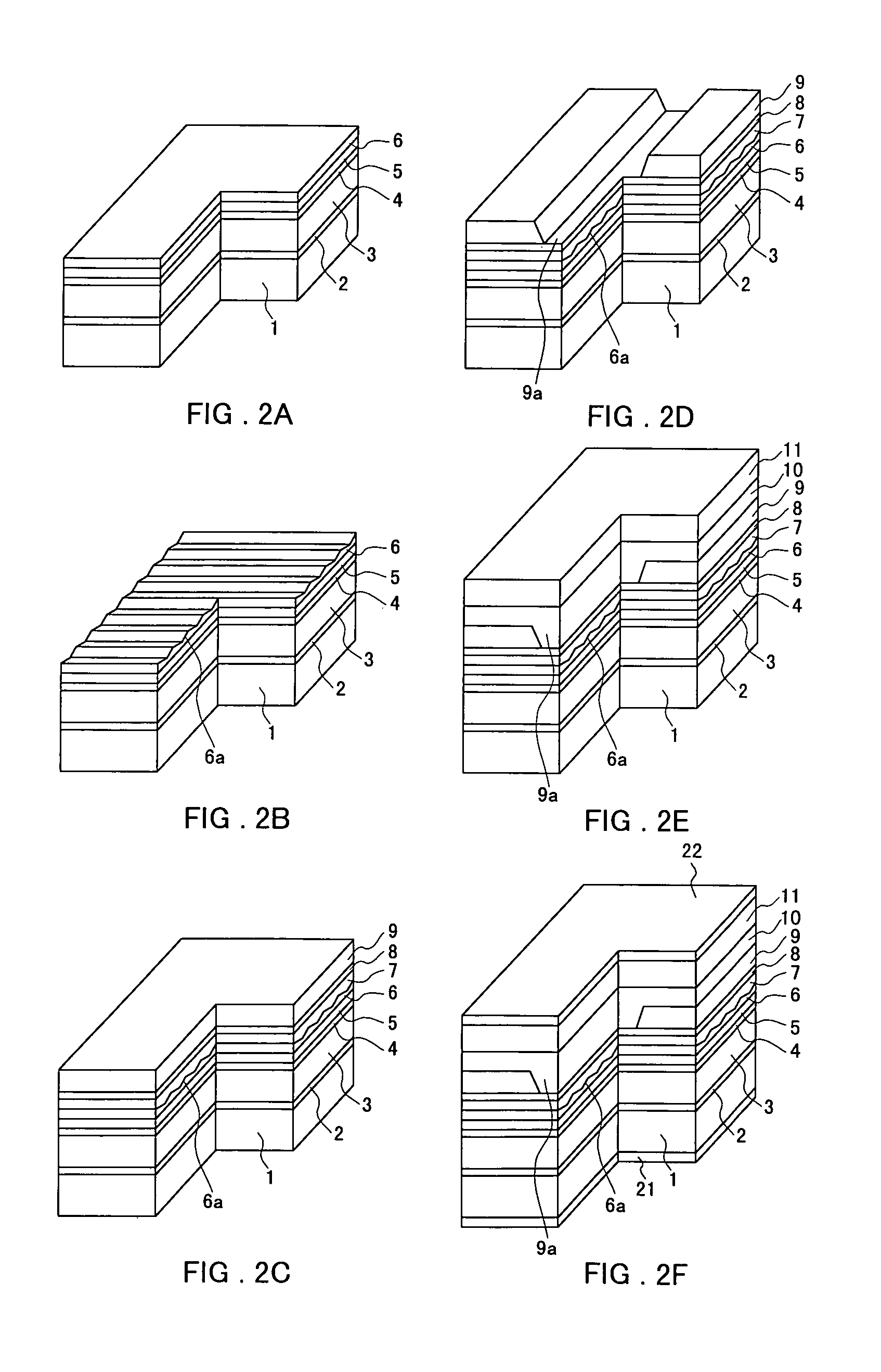Semiconductor laser device and method for manufacturing the same
a semiconductor and laser technology, applied in laser optical resonator construction, laser cooling arrangements, laser details, etc., can solve the problems of reducing yield, difficult to achieve single longitudinal mode characteristics with high yield, and complex manufacturing processes
- Summary
- Abstract
- Description
- Claims
- Application Information
AI Technical Summary
Benefits of technology
Problems solved by technology
Method used
Image
Examples
first embodiment
[0040]In the DFB semiconductor laser shown in FIG. 1, an n-type GaAs buffer layer 2, an n-type Ga0.5Al0.5As first cladding layer 3, a Ga0.85Al0.15As active layer 4, a p-type Ga0.5Al0.5As first optical guiding layer 5, a p-type Ga0.8Al0.2As diffraction grating layer 6, a p-type Ga0.5Al0.5As second optical guiding layer 7, and a p-type Ga0.8Al0.2As etch-stop layer 8 are formed in that order on top of an n-type GaAs substrate 1. Formed on top of that layering structure is an n-type Ga0.4Al0.6As current blocking layer 9 having a stripe-shaped window 9a for current confinement. Furthermore, a p-type Ga0.5Al0.5As second cladding layer 10 and a p-type GaAs contact layer 11 are formed on the current blocking layer 9 and the stripe-shaped window 9a.
[0041]In this laser device, the current injected from the p-type GaAs contact layer 11 is confined by the n-type Ga0.4Al0.6As current blocking layer 9 in the stripe-shaped window 9a, and laser oscillation in the 780 nm band occurs in the active l...
second embodiment
[0059]FIG. 3 shows a DBR semiconductor laser device in accordance with a second embodiment of the present invention. As shown in FIG. 3, in this semiconductor laser, the diffraction grating 6a is formed only at a distributed reflection region B of the diffraction grating layer 6. The method for manufacturing this structure is the same as for the first embodiment up to the formation of the p-type Ga0.8Al0.2As diffraction grating layer 6 in the first crystal growth process. Then, as shown in FIG. 4, the diffraction grating 6a is formed only in the distributed reflection region B by etching only the distributed reflection region B and not the active region A in the surface of the diffraction grating layer 6. In this embodiment, the length of the active region was set to 500 μm, and the length of the distributed reflection region was set to 300 μm.
[0060]Next, as in the first embodiment, a second optical guiding layer 7, an etch-stop layer 8, and a current blocking layer 9 are formed. Af...
third embodiment
[0062]FIG. 5 shows a DBR semiconductor laser device in accordance with a third embodiment of the present invention. In this semiconductor structure, the second cladding layer 10 is provided with a ridge shape, and for current confinement, an n-type Ga0.4Al0.6As current blocking layer 9 is formed in the region outside the ridge serving as a current channel. Numeral 12 denotes a p-type GaAs protective layer, and numeral 11 denotes a p-type GaAs contact layer.
[0063]A method for manufacturing this semiconductor laser is shown in FIG. 6. First, as in the first and second embodiments, the layers up to the diffraction grating layer are formed in a first crystal growth process, then the diffraction grating 6A is formed, and the layers up to the protective layer 12 are formed in a second crystal growth process, as shown in FIG. 6A.
[0064]Then, as shown in FIG. 6B, a stripe-shaped dielectric film 13, for example of nitride (silicon nitride or tungsten nitride) or silicon oxide, is formed, and ...
PUM
 Login to View More
Login to View More Abstract
Description
Claims
Application Information
 Login to View More
Login to View More - R&D
- Intellectual Property
- Life Sciences
- Materials
- Tech Scout
- Unparalleled Data Quality
- Higher Quality Content
- 60% Fewer Hallucinations
Browse by: Latest US Patents, China's latest patents, Technical Efficacy Thesaurus, Application Domain, Technology Topic, Popular Technical Reports.
© 2025 PatSnap. All rights reserved.Legal|Privacy policy|Modern Slavery Act Transparency Statement|Sitemap|About US| Contact US: help@patsnap.com



